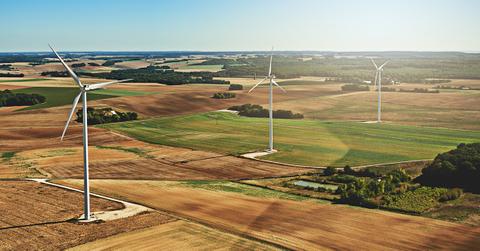How Is Your Carbon Footprint Measured?
As we live, breathe, drive cars, and cut down trees, we as a people emit greenhouse gases into the air. This is marked by what’s called a carbon footprint.
Updated Jan. 5 2021, 10:09 a.m. ET

Being human does not come without a price to the environment. As we live, breathe, drive cars, and cut down trees, we as a people emit greenhouse gases into the air. This is quantified by individual by what’s called a carbon footprint and in general, a zero-waster wants their carbon footprint as low as possible. The higher the carbon footprint, the more waste or greenhouse gases a person is creating and contributing to the atmosphere.
Fortunately, there are several things individuals and people as a society can do to reduce carbon footprints and offset carbon emissions. For example, creating less waste by living a low-waste lifestyle is a great start to reducing your own personal carbon footprint. On a grander scale, society can invoke activities such as paying carbon offset taxes in order to lower carbon footprint and lessen the impacts of particular human activities. Flying, for example, is one of the worst processes for the environment; eco-conscious people can opt to pay a carbon offset tax that puts the voluntary money towards activities and processes that then offset the negative impact of flying. This could include planting trees or donating the tax money toward environmental research.
New to all things carbon footprint and carbon emissions? Keep reading to find out what a carbon footprint is, how it’s measured, how to reduce it, and more.
What Is Your Carbon Footprint and How Is It Measured?
A carbon footprint is the amount of greenhouse gases human processes release into the atmosphere by an individual or specific group, event, or product. The most important greenhouse gas to watch is carbon dioxide but greenhouse gases are emitted by tons of human processes: driving, electricity, flying, diet, and even how much a person recycles.
So, how is carbon footprint measured? Carbon footprint is measured as how many tons of carbon dioxide are emitted per year and takes into consideration all other noxious greenhouse gases like methane, for example. In general terms, walking somewhere has a smaller carbon footprint — or environmental impact — than driving somewhere does. Shipping packages (so, yes, getting Amazon Prime delivered to your house 24/7) has a carbon footprint and so do foods. Since farming produces methane, agriculture is one of the most significant contributors to greenhouse gas emissions.
How to Offset Your Carbon Footprint
Offsetting carbon emissions, and therefore one’s carbon footprint, is absolutely possible. For starters, you can opt for more sustainable methods of transportation. Modes of transportation such as flying (the worst) and driving aren’t great for the environment, so the more you try to walk, bike, or scooter somewhere, the better. You can also opt for public modes of transportation such as a city bus or train. Carpooling is also another meaningful option for offsetting your carbon footprint.

Planting trees is another effective way people can offset their carbon footprints. The more trees are planted, the cleaner the air is. In fact, planting more trees is thought to be a crucial part of reversing and combating climate change, offsetting carbon emissions, and ultimately, saving the planet.
How to Reduce Your Carbon Footprint
The most effective change you can make in order to reduce your carbon footprint is to eat a mostly plant-based diet. Eating vegan or vegetarian most days cuts back your carbon footprint as plant-based diets require less resources and land, emitting fewer greenhouse gas emissions into the air. Livestock is actually responsible for 14.5 percent of manmade global greenhouse gas emissions — particularly methane, which is more potent than even carbon dioxide. Swapping out meat and dairy for plant-based options actually cuts your carbon footprint by 8 pounds for each day you eat plant-based.
Eating plant-based is not the only way your diet can offset carbon emissions. Eating locally, organic, and foods that are in season is another meaningful way to reduce one’s carbon footprint. After all, eating foods from other places requires more resources. Think about it: Food ends up in your local supermarket somehow. Busing, flying, or shipping by boat requires a lot more resources than a local farm stand would have to use. Foods that are shipped long distances also have to be frozen and constantly cooled so they don’t spoil; again, using more resources, therefore creating more greenhouse gas emissions. Cut back on all of this by eating locally, organic, and in season.

When shopping, buying food in bulk with your own reusable, sustainable container can also help. Reducing food waste is another crucial way to cut back on your carbon footprint. Instead of sending food scraps to the landfill — where they cannot naturally break down without oxygen — you can compost your food scraps. Composting food scraps actually turns biodegradable and compostable food into soil, therefore creating zero waste.
Transportation is another big way you can reduce carbon footprint. Whenever possible, opt to walk, bike, or scooter somewhere. If walking or biking is not an option, try taking public transportation like a city bus or train. You might think of public transportation as not very sustainable, but think about it: using one vehicle to transport several people is much more energy-efficient than using one vehicle to transport only one person. It is actually the same reason why the government and environmental entities encourage us to carpool. One vehicle, multiple people moving in it. If every person on the bus instead drove their own car, there would be a lot more emissions than the emissions of just one bus. If public transportation is not a viable option, there is always carpooling or investing in an energy-efficient vehicle.

Appliances also emit greenhouse gases into the air. To offset these emissions and reduce your carbon footprint, look for appliances marked as energy efficient. When doing the laundry, for example, you can wash with cold water. Heating up water takes more energy, creating more waste and more emissions. Using cold energy to do the laundry, dishes, and even to shower can help reduce your carbon footprint by a lot.
If you have to get somewhere via airplane, you can choose to pay a voluntary carbon offset tax. The tax is basically an acknowledgment that flying is bad for the environment, so you are giving your money towards activities and resources that fund environmental research, plant trees, and participate in other sustainable activities.